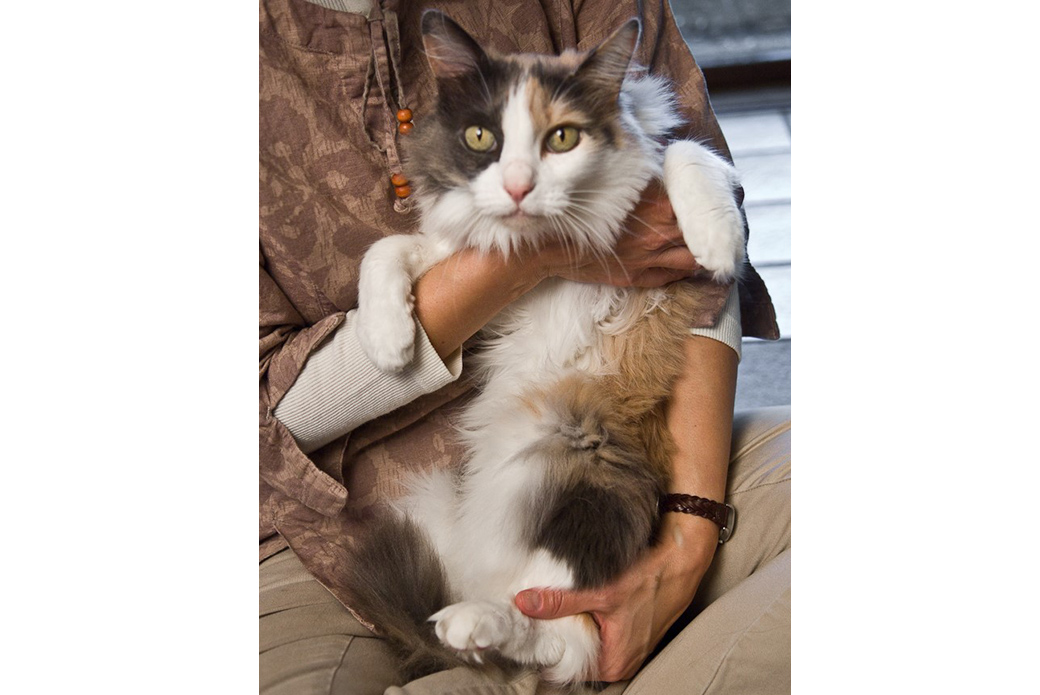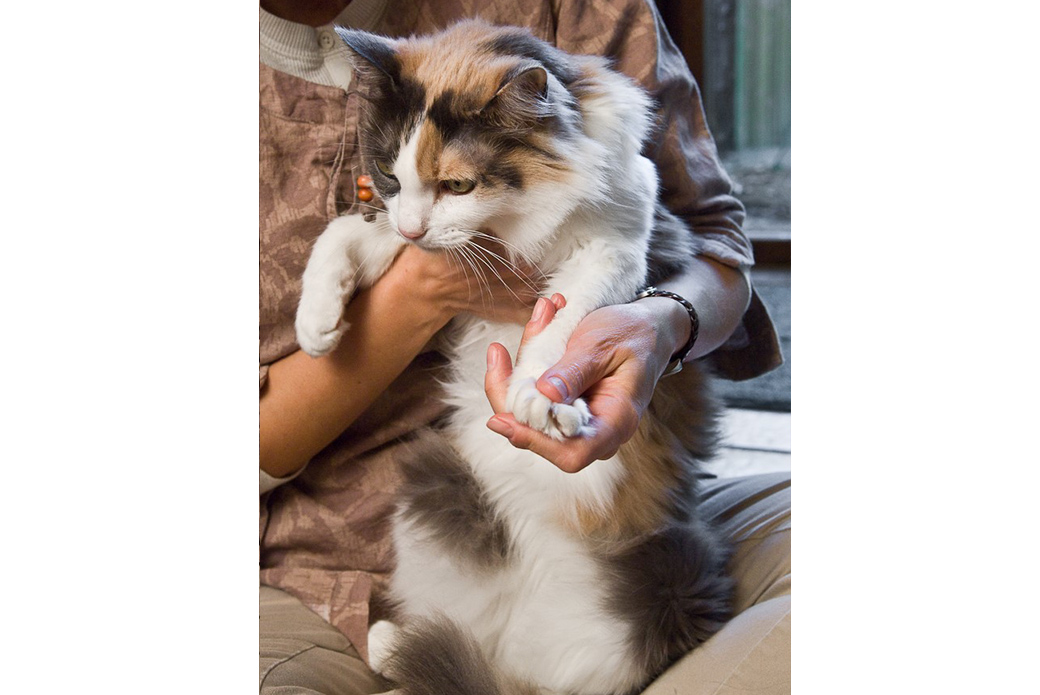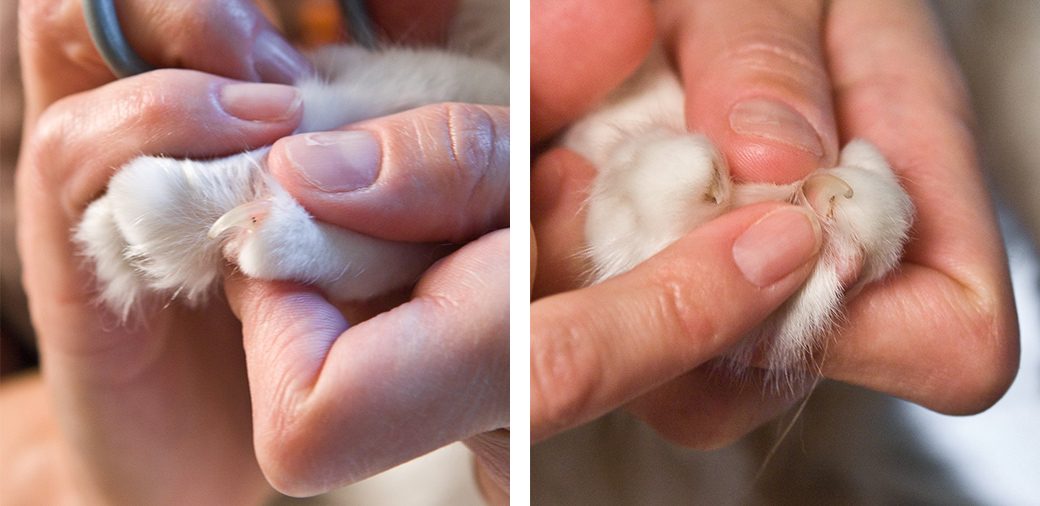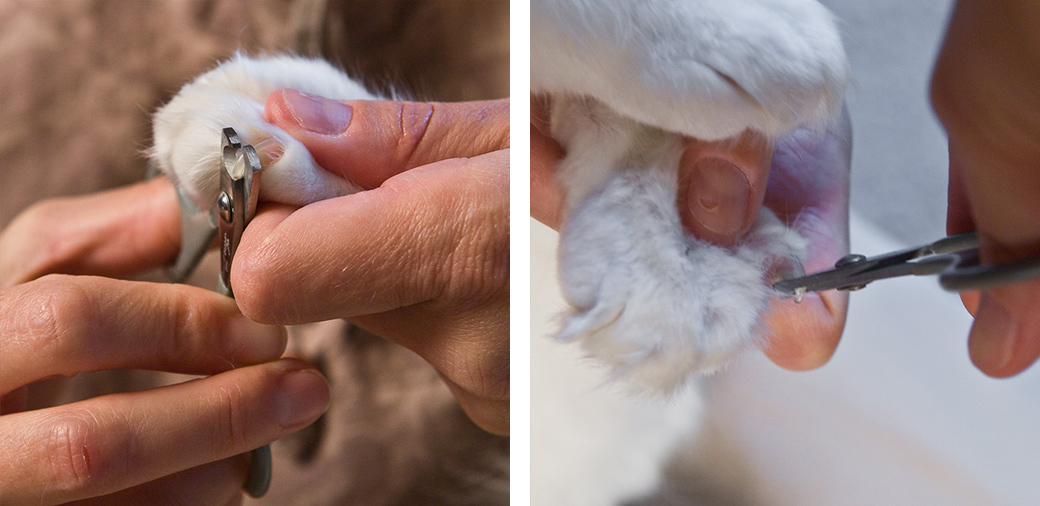Start Early
The best approach to teaching your cat to accept having their claws trimmed is to begin while they are still a kitten. If you start early, they will be more likely to grow up accepting nail trims as a tolerable part of regular grooming. In addition, kittens often haven’t mastered the use of their claws, so they benefit greatly from frequent trimming.
Teaching Your Cat to Accept and Enjoy Having Their Claws Trimmed
Rest assured, teaching your cat to accept having their claws trimmed is an obtainable goal. What’s required is patience. Plan on taking at least a month just to familiarize your cat with having their paws and toes handled. Depending on your cat’s personality and past experiences, your cat may learn to accept having all their paws done in one sitting, just one paw at a time or just a couple of claws at a time. You’ll be most successful if you don’t expect to trim more than a couple of claws in one sitting. The best time to trim your cat's claws is when they are relaxed or sleepy. And don’t try to give a pedicure right after a stressful experience or an energetic round of play.
You’ll need:
- Clippers: Pet nail clippers are available in two basic styles: guillotine and nipper. Cat claws are best trimmed with the guillotine clipper. Replace your clippers as soon as you notice that the blades have grown dull. Dull blades put more pressure on a cat’s claws, making the trimming more uncomfortable and stressful for your cat. Do not use human nail clippers.
- Special treats: What special treat you use depends on your cat, but many cats get excited about bits of tuna or vacuum-sealed salmon, cooked chicken liver or smelly cheese. Test a variety of treats to see which two or three your cat prefers. Once you‘ve decided which treats you’ll use, reserve these for claw trimming only.
- Styptic Powder or Sticks: Sold in most pet stores, styptic powder or sticks will help stop bleeding. Cats have nerves and blood vessels in a part of the nail called the quick. More about how to avoid cutting the quick below.
Whether your cat is an adult or a kitten, the first step is to familiarize them with having their paws handled. Teach them that having their paws touched results in getting delicious treats.
- To begin, gather your treats in a small cup or bag. Bring them and your cat to a place that’s quiet, where your cat feels comfortable.
- Choose a time when your cat is sleepy and relaxed. Avoid the following places and situations when trimming your cat’s claws:
- Where your cat can view birds or other wildlife.
- In the presence of other cats or pets.
- By a window where outdoor cats may pass.
- After a bout of play.
- If your cat has recently—in the last three to four hours—had an altercation with another animal or has been frightened in any way.
- Once you’ve chosen the time and place where you’ll do the trimming, sit with your cat on your lap facing away from you. If your cat likes petting, stroke them a bit. However, if your cat doesn’t like to hold still for very long, don’t pet her.
- If you’re right-handed, take one of your cat’s front paws between the fingers of your left hand.
- Gently take the paw between your index finger, second finger and thumb, and begin massaging. Massage for no more than three seconds. If your cat tries to pull their paw away, don’t react by pinching or pulling on their paw. Instead, follow their movement and simply keep your fingers in contact with their paw.
- After counting to three, gently press the pad of a toe enough to extend the claw.
- Count to one, release your cat’s paw and immediately give them a treat.
- Repeat these three steps four more times during each session.
- Pay attention to how your cat reacts and whether they eat treats readily or not. If your cat tries to pull their paw away from you, next time hold their paw for a shorter count—even for just one second—before extending the claw and giving a treat.
- Work with your cat every other day or every third day, handling a different toe each session until you’ve worked with every toe on one of your cat’s front paws.
Once you’ve handled all the toes on one paw, work to familiarize yourself with your cat’s claws. Bring the clippers, your special cat treats and your cat to your quiet claw-trimming area.
- Hold your cat in your lap.
- As before, take one of their toes in the fingers of your left hand and begin massaging.
- Gently press your cat’s toe pad enough to extend the claw.
- With the claw extended, look for the pink part of the nail, called the “quick,” which contains nerves and blood vessels. When you begin trimming your cat’s claws, you’ll need to avoid cutting near the sensitive quick. Nicking the quick is painful and will cause bleeding. Blood flow can be stopped by applying a styptic material. It’s always a good idea to have this on hand when you start trimming your cat’s nails, just in case you make a mistake and cut the quick.
- Release your cat’s toe and immediately give them a treat.
Bring the clippers, your special cat treats, and your cat to your quiet claw-trimming area.
- Hold your cat in your lap.
- Gently take one of paw in the fingers of your left hand and press a toe pad enough to extend the claw.
- Note where the quick is.
- Position the clippers with your right hand about halfway between the end of the quick and the pointed tip of the claw. You‘ll trim just the sharp tip off the nail. Once you’re sure that your cat is accepts trimming, you can clip a bit more of the nail—although you should never clip right next to the quick.
- Clip the nail.
- Release your cat’s toe and quickly give a treat.
- If your cat didn’t seem to notice the trim, you can try trimming another nail. Don’t attempt to trim more than two claws at one sitting until your cat is obviously comfortable with trimming.
- Try having a second person to either offer treats or to do the trimming while you handle your cat.
- Speak with your veterinarian about prescribing a medication to reduce stress and anxiety during nail trims.
Here are a few things you should never do when trimming your cat’s claws:
- Do not yell at your cat or attempt to punish them in any way.
- Do not cut too close to the quick.
- Do not rush.
- Do not try to trim all your cat’s claws at once.
- Do not trim when you’re upset or your cat’s agitated.






